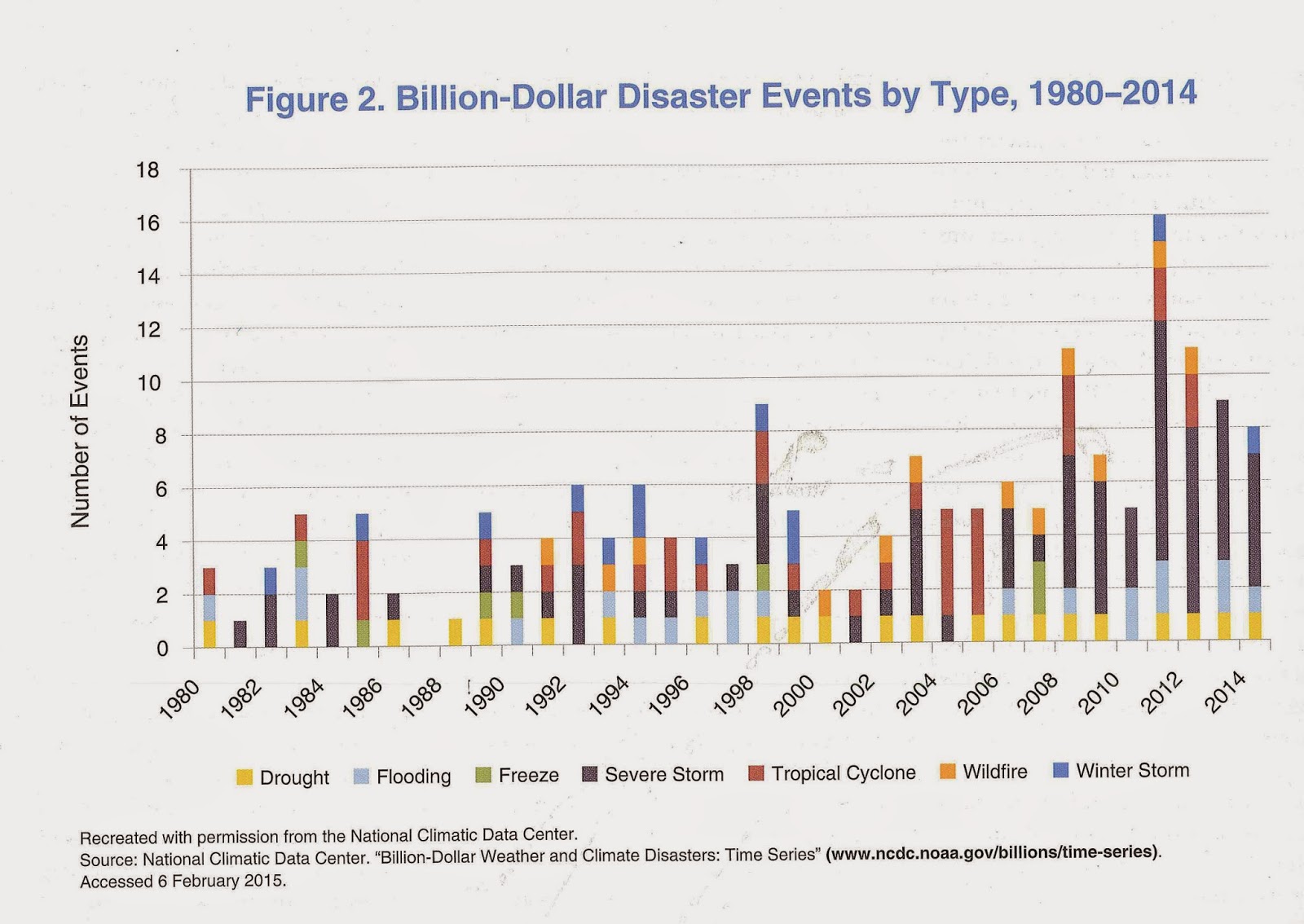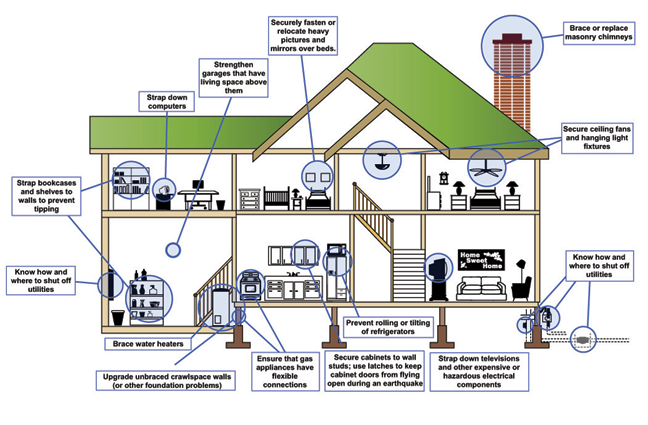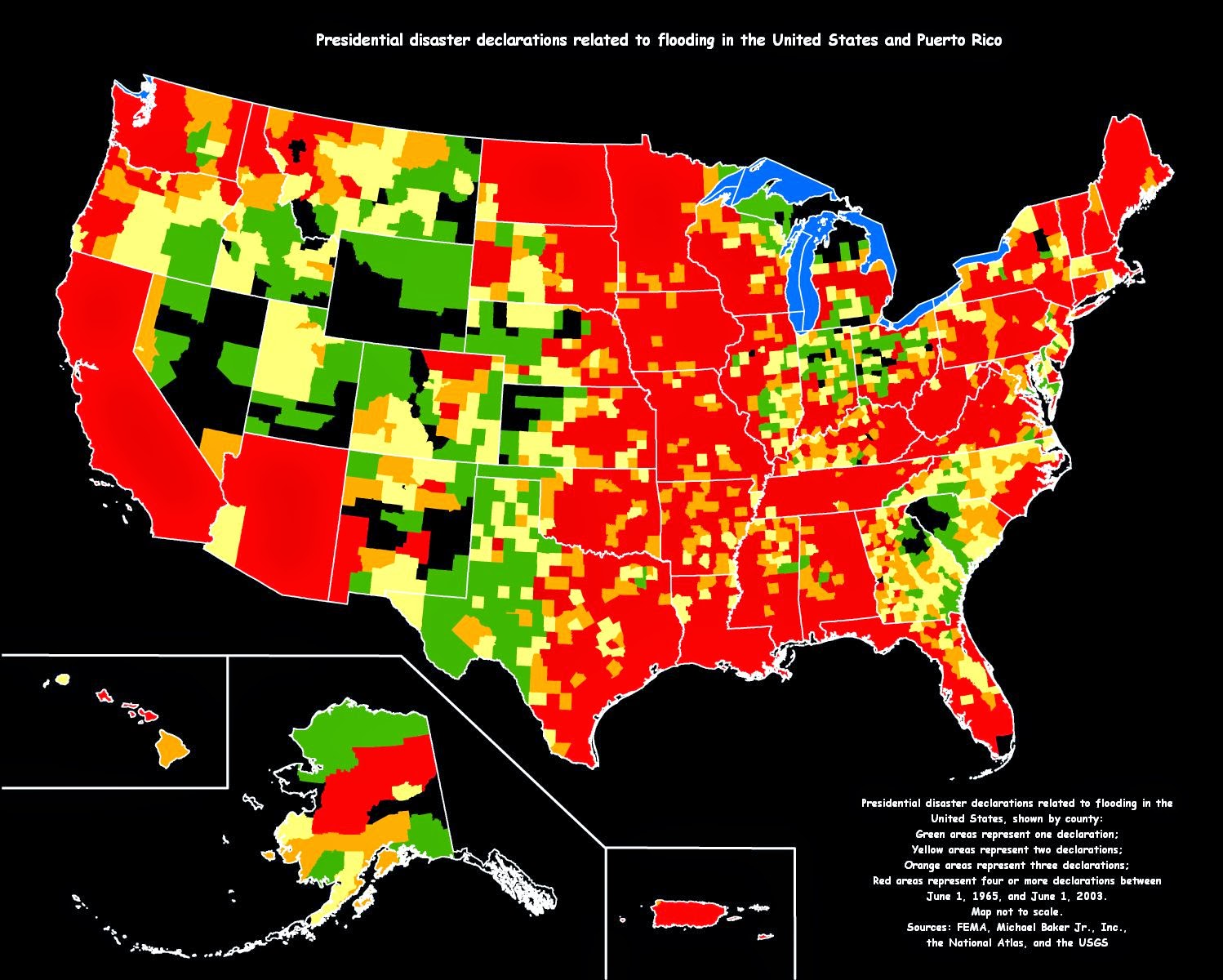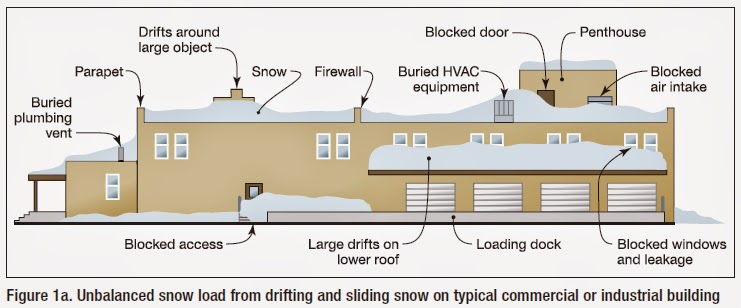An Overview of Resilient Construction for Natural Disaster Mitigation
This article is one in a series looking at the influences of codes on architecture and design.
World Environment Day may be as good an occasion as any to raise awareness of the powers of nature and what it takes to withstand them or be resilient. With the growing popularity of the term resilience, the scope of its usage becomes ever broader. The same happened to the term "sustainability." Now resilience is even bigger than sustainability. To be sustainable, architecture has to be resilient, the thinking goes.
From "Toward a More Resilient Future"
Sociologists have begun to use the concept of social resilience, economists economical resilience, and environmentalists continue to use the environment as model for resilience, writ large. Haven't they been saying all along that humans should take lessons from nature about the resilience of what they build? That nature tells us about diversity and redundancy, which allow natural systems to "spring back" improbably after forest fires, floods, volcanoes and even storms? The below quote illustrates resilience as an "umbrella" term:
We have chosen the word "resilience" as an umbrella term for the planning and design strategies needed in order to help our cities develop the necessary capacity to meet the challenges of the future. – Resilient City.Org)
In spite of the term's fuzziness the urgency to construct resiliently continues to grow. As most scientists agree that violent weather events will become more frequent, code officials and regulatory agencies respond with a slew of new terms, codes and regulations while people insist on re-building in the same places as if nothing had ever happened.
According to FEMA, hazard mitigation is sustained action taken to reduce or eliminate long-term risk to people and their property from hazards. The purpose of mitigation planning is to identify policies and actions that can be implemented over the long term to reduce risk and future losses. In 2000, [..] the Disaster Mitigation Act of 2000 (DMA 2000) [was signed into law]. Part of this act requires local governments to develop and submit a hazard mitigation plan as a condition of receiving mitigation project grants. Hazard mitigation plans are required to be updated every five years.
Climate adaptation is a process that intends to reduce long-term risks from hazards associated with climate variability and climate change. More specifically, adaptation refers to changes that are made to better respond to new climate conditions, thereby reducing harm and taking advantage of present opportunities. (From Baltimore City website)
From "Toward a More Resilient Future"
The latest publication from HUD, "Toward a More Resilient Future" comes as helpful information to cut through the fog at least in the arena of natural disasters. The document provides some background:
"Resource scarcity adds further urgency to mitigation and resilience efforts. Public costs associated with disaster response and recovery are staggering; the Center for American Progress reports that the federal government spent $136 billion on disaster relief from fiscal year 2011 to 2013. The potential exists, however, to reduce these costs through prudent investment in mitigation measures. The Multihazard Mitigation Council of the National Institute of Building Sciences estimates that for every $1 spent on mitigation, society saves $4 in future losses". (HUD)
Even die-hard libertarians rarely dispute government's usefulness in regulating disaster preparedness response and mitigation planning. The federal government explains:
"Buildings in any geographic location are subject to a wide variety of natural phenomena such as windstorms, floods, earthquakes, and other hazards. While the occurrence of these incidents cannot be precisely predicted, their impacts are well understood and can be managed effectively through a comprehensive program of hazard mitigation planning". (National Institute of Building Science)
To add focus, this article will be limited to discussing what it means to design a building to be resilient, to adapt to climate change and to mitigate for damage. Should resilient buildings simply protect lives or should they withstand extreme weather and disasters without damage? What really are the threats to prepare for?
Construction technology in recent decades seems to have focused mostly on making buildings lighter, faster to build and cheaper. Resiliency points us in the opposite direction.
Just like the sustainability concerns that came first, resilience requires smart implementation of technology, material knowledge, structural engineering, and occasionally also additional heft and substance where construction has become too flimsy to hold up to the challenges. Resilient buildings need to do a number of things, many in combination, but rarely including all of these challenges:
- Hurricane and high wind resistance
- Earthquake resistance
- Flood resistance
- Wildfire resistance
- Snow-load resistance
The following is a discussion of resilience under the most common threats related to climate.
Wind
From 2011-2013, there were over 3,500 tornadoes resulting in 678 deaths in the US. Between 2010-2012, 60 hurricanes or tropical storms resulted in 586 deaths and over $108 billion in damages (NOAA)
Wind zones in the US
Fortified construction may begin with small items such as hurricane clips that tie wall framing to floors and foundations, and roofs to walls, and could go on to include storm resistant siding, window shutters or even impact resistant glass and roofs. Shelters and hospitals should be the most resilient structures. As a model for resilient hospital construction one can look at the brand new Mercy Hospital in Joplin that was completed this spring after its predecessor received a fatal blow from a Category 5 tornado in 2011.
Miami-Dade County in Florida was the first to certify products for Hurricane resistant structures. Subsequently, the Florida Building Code enacted all the requirements for Hurricane resistance. Many other states reference the requirements of the Florida Building Code. The IBC Section 1609.3. contemplates wind speeds going up to 200 mph. FEMA regulates residential safe rooms (Fema 320) and community shelters (FEMA 361).
Earthquakes (seismic construction)
A glance at the US seismic activity map quickly shows, that earthquakes happen in a much wider geographic area than typically assumed. Various tremors in the Northeast reminded us locally by damaging well-known structures such as the Washington Monument, the National Cathedral (both in DC) and here in Baltimore, the Basilica of the Assumption.
Seismic Risk Map
"One of the key ways a community protects itself from potential earthquake disasters is by adopting and enforcing a building code with appropriate seismic design and construction standards. The seismic requirements in U.S. model building codes and standards are updated through the volunteer efforts of design professionals and construction industry representatives under a process sponsored by the Federal Emergency Management Agency (FEMA) and administered by the Building Seismic Safety Council (BSSC).
Seismic Frequency map
At regular intervals, the BSSC develops and FEMA publishes the NEHRP (National Earthquake Hazards Reduction Program) Recommended Seismic Provisions for New Buildings and Other Structures (referred to in this publication as the NEHRP Recommended Seismic Provisions or simply the Provisions). The Provisions serves as a resource used by the codes and standards development organizations as they formulate sound seismic-resistant design and construction requirements". (FEMA)
The Structural Engineers Association (SEA) recommends Lateral Force Requirements with a general set of performance characteristics to qualify the nature of expected damage from an earthquake as follows:
- Resist a minor level of earthquake ground motion without damage
- Resist a moderate level of earthquake ground motion without structural damage, but possibly experience some nonstructural damage.
- Resist a major level of earthquake ground motion having an intensity equal to the strongest either experienced or forecast for the building site without collapse, but possibly with some structural as well as nonstructural damage.
San Francisco earthquake damage
To satisfy the performance goals of the NEHRP Recommended Seismic Provisions: a number of characteristics are important to the design of buildings and structures to ensure that they will behave adequately in strong earthquakes. These include:
- Stable foundations;
- Continuous load paths;
- Adequate stiffness and strength;
- Regularity;
- Redundancy;
- Ductility and toughness; and
- Ruggedness.
The extent of earthquake resilience that is required by code depends on the risk zones. In high risk zones, all of the above measures are required, but in lower risk zones, some of the features are not needed.
Seismic home construction
While even unreinforced masonry and reinforced concrete construction is good against wind storms, it generally performs badly in earthquake construction. Earthquake resilience is primarily life safety protection and only secondarily asset protection.
Depending on the earthquake zone, the type of construction and the desired performance, protective measures are too numerous to count, ranging from simple shear walls or, alternatively, braced frames, to the more difficult to construct moment resisting frames (now even possible in wood construction with the help of connecting steel devices), diaphragms to the construction of base isolation or energy dissipating devices such as various kinds of dampers which were used for some San Francisco skyscrapers.
For residential (house) construction, FEMA offers this simple observation:
Because earthquake loads are proportional to the weight of the house, an upper bound on assembly weight provides an upper bound on earthquake loads. The specified maximum assembly weights relate directly to the weights considered in developing the IRC earthquake bracing provisions. The effect of the maximum weights is the exclusion of heavier finish materials when using the IRC provisions. (FEMA)
Floodwater Protection
The risk of flooding is not limited to shorelines along oceans or rivers. The risk is laid out in FEMA flood hazard maps showing designated flood flood zones.
Over 178 million acres have been designated as floodplains by FEMA, an area larger than the size of Texas.
Presidential flood disaster declarations
For protection, whole buildings or at least their habitable spaces need to be elevated above the critical flood levels plus some free board. Foundations have to be secured against water forces and all building materials subjected to flood waters need to withstand those impacts. Building in floodplains, or Special Flood Hazard Areas (SFHA) is regulated by the International Building Code, ASCE national reference standards, and by local community codes.
Even in areas outside designated flood zones and traditionally not affected by flooding, excessive downpours may require special measures to keep water away from basements or first floors, making materials water resistant and allowing construction to resist hydrodynamic forces. ("Everyone lives in a flood zone" Floodsmart.gov )
Protecting buildings that are constructed in special flood hazard areas (SFHAs) from damage caused by flood forces is an important objective of the National Flood Insurance Program (NFIP). In support of this objective, the NFIP regulations include minimum building design criteria that apply to new construction, repair of substantially damaged buildings, and substantial improvement of existing buildings in SFHAs. (FEMA)
NFIP regulations require flood openings in all enclosures below the BFE of buildings in flood hazard zones. This is referred to as "wet floodproofing," where water is expected to move in and out of the lower, uninhabited portions of the building. It is required in all residential buildings, but in non-residential buildings an exception is allowed for what is referred to as "dry" floodproofing, essentially attempting to make the building watertight.
Flooding in Chrisfield, MD after hurricane Sandy.
Some types of enclosed areas under elevated buildings will require flood openings:
- Parking areas or attached garages
- Building access areas such as stairwells, foyers, elevators
- Storage (for low-value items)
- Under-floor spaces like crawlspaces providing access to utilities
"Active" floodproofing measures require human intervention, such as opening and closing flood gates, while "Passive" measures are built in, operating automatically without any human intervention. In residential buildings, wet floodproofing must operate automatically. Many dry floodproofing systems allowed in non-residential buildings require human action in order to function.
Wildfires
This may be mostly an issue for buildings bordering forests or wildlands. The fire map immediately shows that risk is more common "out west". Fire fortification could, however, also be in order for any building close to other buildings or trees in an era where extreme drought conditions are rapidly spreading to areas typically not accustomed to droughts.
Protective measures include non combustible roofs and siding, fire barriers and fire breaks. Windows are a weak spot and need to be protected with exterior shutters or fire resistant awnings.
Wildfire frequency map.
Whenever possible, use fire-resistant materials for construction,
renovation, or repairs, and practice good maintenance.
- Use Class A roof material, such as tile, slate, or asphalt with an underlayment, or Class B pressure-treated shakes and shingles to reduce risk.
- Use wood treated with fire-retardant chemicals.
- Ensure that the driveway or other access is wide enough for emergency vehicles to enter, as well as being clear of flammable vegetation.
- Mark the entrance to your property with address signs that are clearly
- visible from the road.
- Install dual-sensor smoke alarms on each level of your home, especially near bedrooms; test monthly and change the batteries at least once a year.
- Install fire sprinklers.
- Install spark arrestors in chimneys and stovepipes and inspect chimneys at least twice a year.
- Enclose or box in eaves, soffits, decks, and other openings in the structure.
- Use fine wire mesh to cover vents, crawl spaces, and the space underneath porches and decks.
- Install multi-pane windows or tempered safety glass.
- Use fireproof shutters to protect large windows and glass doors from radiant heat. (FEMA)
Wildfire resilience methods.
Beyond wildfires, any building should be resilient against house fires, a weak spot in a country with so much wood construction. Fire death rates are pretty high in the US, but the scope of protection against house fires exceeds the limitations of this article.
Snow
Boston's recent century snowfalls have crushed a number of roofs. In Baltimore, a few years back, the roof of the B&Roundhouse which has stood for 100 years collapsed under excessive snow loads. (the roof had a design flaw). Here, too, codes have begun to be modified. Most notably, in snow zones they now include drift into the load considerations which can have significant impacts on the those areas of roof structure where drifts need to be expected.
Snow load conditions.
Typical ground snow loads range from 0 psf in the South to 50 psf in the northern United States. In mountainous areas, the ground snow load can surpass 100 psf such that local snow data should be carefully considered. In areas where the ground snow load is less than 15 psf, the minimum roof live load (refer to Section 3.4) is usually the controlling gravity load in roof design. For a larger map with greater detail, refer to ASCE.
Fresh snow: 10-12 in. of new snow is equal to one in. of water, or about 5 lbs per square foot of roof space, so you could have up to 4 ft. of new snow before the roof will become stressed.
Packed snow: 3-5 in. of old snow is equal to one inch of water, or about 5 lbs per square foot of roof space, so anything more than 2 ft. of old snow could be too much for your roof to handle.
B&O Roundhouse, Baltimore roof collapse after record snow.
Total accumulated weight: two ft. of old snow and two ft. of new snow could weigh as much as 60 lbs per square foot of roof space, which is beyond the typical snow load capacity of most roofs.
Ice: one in. of ice equals one ft. of fresh snow. (Disaster Safety)
Regional Aspects
As previously noted, all of the above measures of resilience are described for individual buildings. But as our brief intro already discussed, resilience is now understood in a much broader sense.
It includes elements of regional, urban and neighborhood designdown to the level of how structures are grouped and accessed or where resources are placed and where designated areas of refuge are located or how evacuation routes are planned, found and kept secure and even how entire community can become functional again after disasters.
Water infrastructure (image: ARUP).
Additionally there is the entire field of resilient infrastructure that involves either maintaining the utility and transportation grids, or redundancy measures with local off-grid support systems such as stand by generators, cisterns, and satellite based telecommunication.
Bay Bridge, CA: The design, engineering and construction teams have met the challenge of making the Bay Bridge seismically resilient with cutting-edge innovations and enhancements—some never before used in bridge building—that are transforming the bridge into a state-of-the-art engineering icon.
In the context of the federal Sustainable Communities policies, HUD has an Office of Economic Resilience. Its director, Harriet Tregoning laid out the specifics for a National Disaster Resilience Competition, to participants at the Partners for Smart Growth Conference in January in Baltimore. The competition promises nearly $1 billion in federal aid to communities across the United States devastated by floods, tornadoes, hurricanes, and torrential storms that have occurred with greater frequency in recent years due to climate change.
Conclusion
For those who have perfected for decades the mantra of cheaper and faster construction, the new panoply of requirements may cause consternation and seem entirely unattainable, at least for a reasonable cost. But the alternative, ever larger insurance claims from ever bigger losses is no practical or sustainable alternative, certainly not one that complies with the two major tenets of resiliency: To withstand or at least to quickly "spring back".
Florida waterfront house following FEMA standards with elevated habitable spaces.
Resilience forces us to take a broader view and the internalization of some of the cost previously seen as external (such as insurance claims). To stay competitive in the marketplace, buildings have to not only comply with codes and regulations, they have to be insurable and desirable to its users.
To this end the requirements of resilience may take a similar path as accessibility requirements. Is architecture and appearance affected by resilience? The strongest influence likely comes from flood resiliency. The requirement to elevate active first floors above the base flood levels plus freeboard has already required some balancing between pedestrian experience and resilience at new waterfront highrises in Baltimore.
Floridians call the new waterfront homes on stilts "Fema boxes" and flood resilient new subway entrances in New York require various humps and ramps. Fire breaks around cabins and secluded houses in the woods may make them a bit less romantic but overall, the resilience should barely affect the appearance of buildings or the quality of urban spaces.
After complaining a lot, the building industry eventually incorporated accessibility to the benefit of everybody, not only the disabled or impaired. This may be what will happen with resiliency features.
A somewhat surprising precedent may be cars, not a product usually associated with sustainability or resilience. However, just looking at the product itself, it is obvious how much more resilient today's cars are compared to those of the 1950ies when, when a much smaller number and many less miles traveled produced a much higher toll in traffic fatalities.
In that sense, buildings have a long way to go before they show a comparable improvement in protecting life and withstanding adverse conditions.
But even with resilient buildings and a fortified infrastructure, the country's biggest challenge may still remain: the creation of overall more resilient communities. Modern means of just-in-time production, social segregation, non-redundant street networks, centralized power and IT networks, to name just a few trends, have made the modern society less resilient and more vulnerable than communities were when food, water, electricity and transport were primarily decentralized, local affairs with a high level of redundancy. As observed at the top of this article, resilience is easily subject to scope creep.
Klaus Philipsen, FAIA. Edited by Ben Groff
Links:
Federal Disaster Mitigation Act 2000
European Climate Adaptation Platform
FEMA: Safe Room Design
Texas Windstorm Resistant Construction Guide
FEMA: Flood Resistant Materials Requirements
Flood Resistant Construction
Building Construction to Reduce Wildfire Risk
Homebuilders Guide to Seismic Construction
US and International Seismic Codes
FEMA: Earthquake Resistant Design Concepts
Natural Hazards Mitigation
Guide to California Building Standards Code Title 24
Guide to Hurricane Resistant Construction (2005)
Design Loads for Residential Buildings (HUD)
FEMA: How to Prepare for a Wildfire
FEMA Snow Load Guide
Baltimore City: The Disaster Preparedness and Planning Project














